Kingdom Animalia Order Charadriiformes Higher classification Ciconiiformes | Phylum Chordata Scientific name Jacanidae Rank Family | |
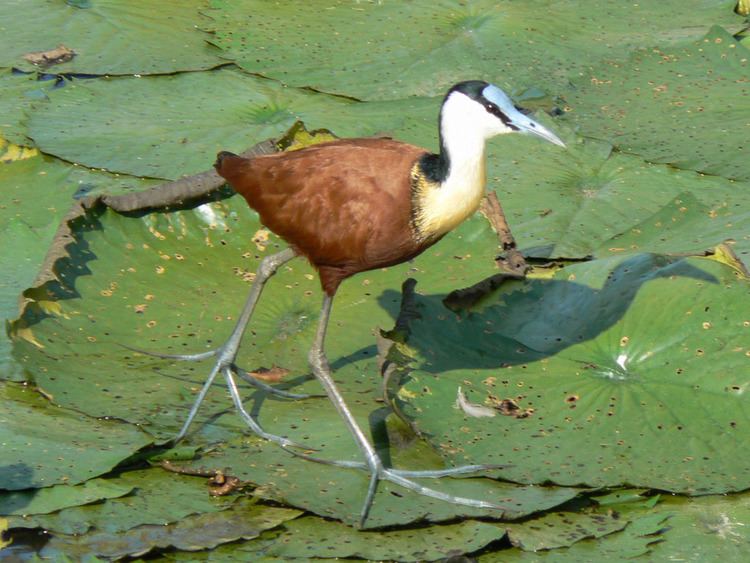 | ||
Lower classifications African jacana, Wattled jacana, Northern jacana, Madagascan jacana | ||
Comb crested jacana with newly hatched chicks
The jacanas (sometimes referred to as Jesus birds or lily trotters) are a group of tropical waders in the family Jacanidae. They are found worldwide within the tropical zone. See Etymology below for pronunciation.
Contents
- Comb crested jacana with newly hatched chicks
- African jacana the jesus bird
- Etymology and pronunciation
- Species
- References

Eight species of jacana are known from six genera. The fossil record of this family is restricted to a recent fossil of the wattled jacana from Brazil and a Pliocene fossil of an extinct species, Jacana farrandi, from Florida. A fossil from Miocene rocks in the Czech Republic was assigned to this family, but more recent analysis disputes the placement and moves the species to the Coraciidae.

They are identifiable by their huge feet and claws which enable them to walk on floating vegetation in the shallow lakes that are their preferred habitat. They have sharp bills and rounded wings, and many species also have wattles on their foreheads.
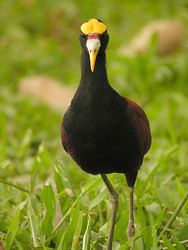
In terms of sexual size dimorphism, female jacanas are larger than the males. The latter, as in some other wader families like the phalaropes, take responsibility for incubation, and some species (notably the northern jacana) are polyandrous. However, adults of both sexes look identical, as with most shorebirds. They construct relatively flimsy nests on floating vegetation, and lay eggs with dark irregular lines on their shells, providing camouflage amongst water weeds.
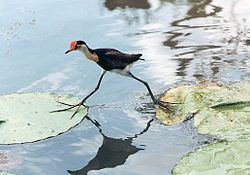
Their diet consists of insects and other invertebrates picked from the floating vegetation or the water’s surface.
Most species are sedentary, but the pheasant-tailed jacana migrates from the north of its range into peninsular India and southeast Asia.
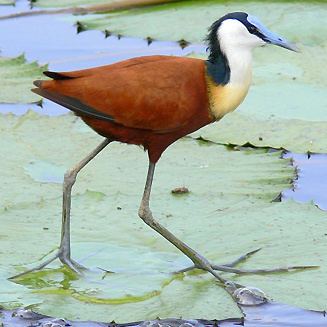
African jacana the jesus bird
Etymology and pronunciation
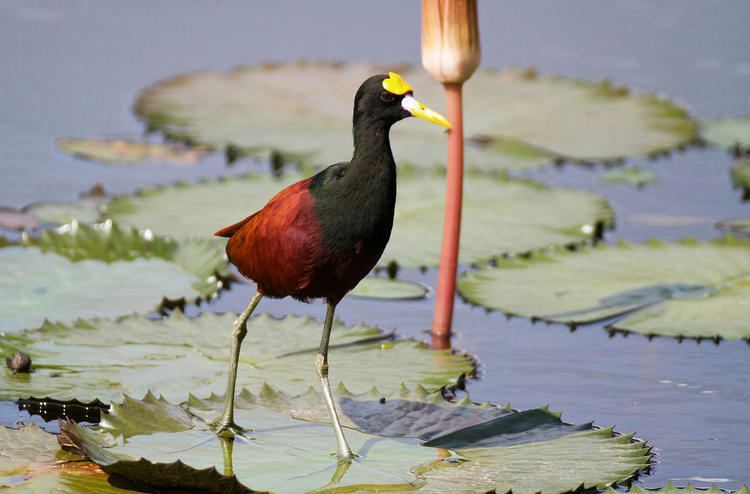
Jacana is Linnæus' scientific Latin spelling of the Brazilian Portuguese jaçanã. That is from a Tupi name of the bird, ñaha'nã.
The Portuguese word is pronounced approximately [ʒasaˈnã]. As in façade, Provençal, and araçari, the Ç is meant to be pronounced as an S. US dictionaries give various pronunciations: /ˌʒɑːsəˈnɑː/ ZHAH-sə-NAH, /ˌdʒɑːsəˈnɑː/ JAH-sə-NAH, as well as the anglicised /dʒəˈkɑːnə/ jə-KAH-nə, which is the only pronunciation in an Australian dictionary. A British dictionary gives /ˈdʒækənə/ JAK-ə-nə for the spelling "jacana" and /ʒæsəˈnɑː/ zhas-ə-NAH for "jaçana".
Species
FAMILY: JACANIDAE
